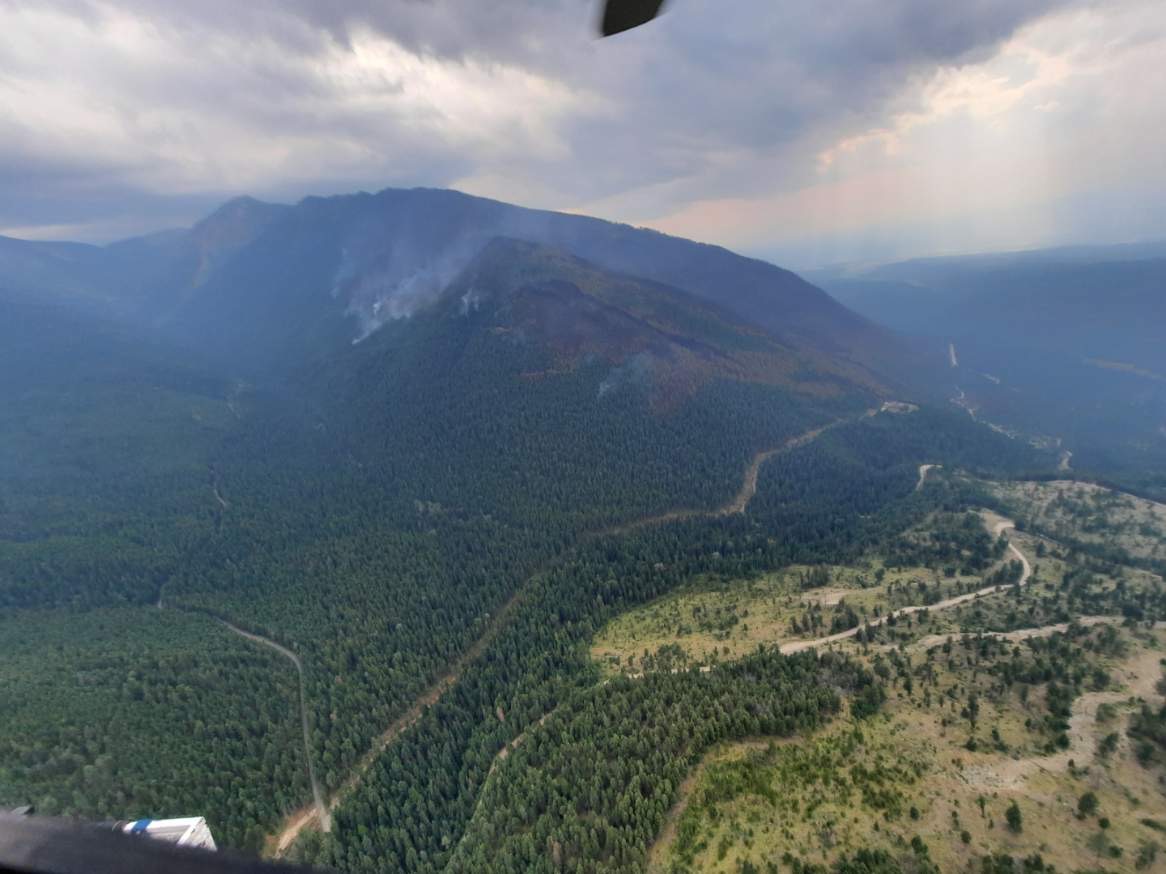Mount Bill Nye east of Cranbrook was not named after the famous Science Guy, unless, of course, he is a time traveller, as the mountain was known by that name since the late 1890s.
The name of Mount Bill Nye has been in local news a number of times this summer, as a wildfire broke out in early July, and grew to nearly 3,000 hectares. The fire is now being held back by fire crews.
According to the federal Department of Natural Resources, Mount Bill Nye officially took its name on January 1, 1954. For context, William Sanford Nye (Bill Nye the Science Guy) was born a year later, on November 27, 1955.
That said, the name dates even farther back than its official adoption.
According to David Humphrey, volunteer archivist with the Cranbrook History Centre, the mountain appears to have been named after Bill Nye mine, which was originally staked in 1898.
This claim was backed up by several Cranbrook Herald newspaper clippings dating back to 1900, 1901 and 1910 that mention the mine by name.
The Columbia Basin Institute of Regional History (CBIRH) went on a similar journey to uncover where Mount Bill Nye got its name.
Information from the CBIRH said the mine was staked by William M. Violet, a prospector born in Nova Scotia, who moved into the East Kootenay region, according to a census of Fort Steele residents in 1901.
Both the CBIRH and Fernie Museum speculate that Violet named the mine after an American humourist who was popular at the time, Edgar Wilson Nye, who had adopted the pen name “Bill Nye.” This came from a character with the same name in a well-renowned poem, “The Heathen Chinee,” published in 1870.
The author, American writer Bret Harte, intended the poem to satirize anti-Chinese sentiment at the time, but some readers used it to reinforce their own racism, according to a book titled The Bohemians: Mark Twain and the San Francisco Writers Who Reinvented American Literature.
The speculation makes sense, as Nathalie Picard, Programming Coordinator with the Cranbrook History Centre said the East Kootenay was home to a number of Asian immigrants, particularly people from China.
According to the Cranbrook History Centre, some immigrants worked on the railway under harsh conditions, while others came from the United States to take part in the gold rush of the 1850s. After work was completed and the gold dried up, many stayed in the region to work other jobs and formed a community in Cranbrook.
“There were Asian people living in Fort Steele in the early 1860s. What’s interesting is that a number of them came up from California because they were following the gold rush,” said Picard. “Immigration to Canada for Asian people was happening not only from across the ocean, but also with northern movement from the United States.”
While the name of Mount Bill Nye is only up for speculation for now, the evidence points to the plausible origin being that it comes from William M. Violet’s appreciation of Edgar Wilson Nye’s work, or perhaps he was a fan of Bret Harte’s poem.
More: Exploring the past of Cranbrook’s Asian community (May 31, 2021)
More: Best Guess – The naming of Mount Bill Nye (Columbia Basin Institute of Regional History)



